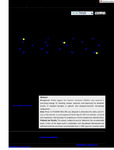Durvalumab as monotherapy and in combination therapy in patients with lymphoma or chronic lymphocytic leukemia: The <scp>FUSION NHL</scp> 001 trial
| dc.contributor.author | Casulo, C | |
| dc.contributor.author | Santoro, A | |
| dc.contributor.author | Cartron, G | |
| dc.contributor.author | Ando, K | |
| dc.contributor.author | Munoz, J | |
| dc.contributor.author | Le Gouill, S | |
| dc.contributor.author | Izutsu, K | |
| dc.contributor.author | Rule, Simon | |
| dc.contributor.author | Lugtenburg, P | |
| dc.contributor.author | Ruan, J | |
| dc.contributor.author | Arcaini, L | |
| dc.contributor.author | Casadebaig, M | |
| dc.contributor.author | Fox, B | |
| dc.contributor.author | Kilavuz, N | |
| dc.contributor.author | Rettby, N | |
| dc.contributor.author | Dell'Aringa, J | |
| dc.contributor.author | Taningco, L | |
| dc.contributor.author | Delarue, R | |
| dc.contributor.author | Czuczman, M | |
| dc.contributor.author | Witzig, T | |
| dc.date.accessioned | 2022-08-25T11:51:10Z | |
| dc.date.issued | 2022-07-19 | |
| dc.identifier.issn | 2573-8348 | |
| dc.identifier.issn | 2573-8348 | |
| dc.identifier.other | e1662 | |
| dc.identifier.uri | http://hdl.handle.net/10026.1/19580 | |
| dc.description.abstract |
<jats:title>Abstract</jats:title><jats:sec><jats:title>Background</jats:title><jats:p>Studies suggest that immune checkpoint inhibitors may represent a promising strategy for boosting immune responses and improving the antitumor activity of standard therapies in patients with relapsed/refractory hematologic malignancies.</jats:p></jats:sec><jats:sec><jats:title>Aims</jats:title><jats:p>Phase 1/2 FUSION NHL 001 was designed to determine the safety and efficacy of durvalumab, an anti‐programmed death ligand 1 (PD‐L1) antibody, combined with standard‐of‐care therapies for lymphoma or chronic lymphocytic leukemia (CLL).</jats:p></jats:sec><jats:sec><jats:title>Methods and Results</jats:title><jats:p>The primary endpoints were to determine the recommended phase 2 dose of the drugs used in combination with durvalumab (durvalumab was administered at the previously recommended dose of 1500 mg every 4 weeks) and to assess safety and tolerability. Patients were enrolled into one of four arms: durvalumab monotherapy (Arm D) or durvalumab in combination with lenalidomide ± rituximab (Arm A), ibrutinib (Arm B), or rituximab ± bendamustine (Arm C). A total of 106 patients with relapsed/refractory lymphoma were enrolled. All but two patients experienced at least one treatment‐emergent adverse event (TEAE); those not experiencing a TEAE were in Arm C (diffuse large B‐cell lymphoma [DLBCL]) and Arm D (DLBCL during the durvalumab monotherapy treatment period). No new safety signals were identified, and TEAEs were consistent with the respective safety profiles for each study treatment. Across the study, patients with follicular lymphoma (FL; <jats:italic>n</jats:italic> = 23) had an overall response rate (ORR) of 59%; ORR among DLBCL patients (<jats:italic>n</jats:italic> = 37) was 18%. Exploratory biomarker analysis showed that response to durvalumab monotherapy or combination therapy was associated with higher interferon‐γ signature scores in patients with FL (<jats:italic>p</jats:italic> = .02).</jats:p></jats:sec><jats:sec><jats:title>Conclusion</jats:title><jats:p>Durvalumab as monotherapy or in combination is tolerable but requires close monitoring. The high rate of TEAEs during this study may reflect on the difficulty in combining durvalumab with full doses of other agents. Durvalumab alone or in combination appeared to add limited benefit to therapy.</jats:p></jats:sec> | |
| dc.format.extent | e1662- | |
| dc.format.medium | Print-Electronic | |
| dc.language | en | |
| dc.language.iso | eng | |
| dc.publisher | Wiley Open Access | |
| dc.subject | clinical trials | |
| dc.subject | durvalumab | |
| dc.subject | hematologic malignancies | |
| dc.subject | lymphoma | |
| dc.subject | programmed death ligand 1 | |
| dc.subject | Humans | |
| dc.subject | Leukemia, Lymphocytic, Chronic, B-Cell | |
| dc.subject | Rituximab | |
| dc.subject | Antineoplastic Combined Chemotherapy Protocols | |
| dc.subject | Lymphoma, Large B-Cell, Diffuse | |
| dc.title | Durvalumab as monotherapy and in combination therapy in patients with lymphoma or chronic lymphocytic leukemia: The <scp>FUSION NHL</scp> 001 trial | |
| dc.type | journal-article | |
| dc.type | Journal Article | |
| dc.type | Research Support, Non-U.S. Gov't | |
| plymouth.author-url | https://www.ncbi.nlm.nih.gov/pubmed/35852004 | |
| plymouth.issue | 1 | |
| plymouth.volume | 6 | |
| plymouth.publication-status | Published | |
| plymouth.journal | Cancer Reports | |
| dc.identifier.doi | 10.1002/cnr2.1662 | |
| plymouth.organisational-group | /Plymouth | |
| plymouth.organisational-group | /Plymouth/Faculty of Health | |
| plymouth.organisational-group | /Plymouth/Faculty of Health/Peninsula Medical School | |
| plymouth.organisational-group | /Plymouth/REF 2021 Researchers by UoA | |
| plymouth.organisational-group | /Plymouth/REF 2021 Researchers by UoA/UoA01 Clinical Medicine | |
| plymouth.organisational-group | /Plymouth/REF 2021 Researchers by UoA/UoA01 Clinical Medicine/UoA01 Clinical Medicine | |
| plymouth.organisational-group | /Plymouth/Research Groups | |
| plymouth.organisational-group | /Plymouth/Research Groups/Institute of Translational and Stratified Medicine (ITSMED) | |
| plymouth.organisational-group | /Plymouth/Research Groups/Institute of Translational and Stratified Medicine (ITSMED)/CBR | |
| plymouth.organisational-group | /Plymouth/Research Groups/Institute of Translational and Stratified Medicine (ITSMED)/CCT&PS | |
| plymouth.organisational-group | /Plymouth/Users by role | |
| plymouth.organisational-group | /Plymouth/Users by role/Academics | |
| dc.publisher.place | United States | |
| dcterms.dateAccepted | 2022-06-17 | |
| dc.rights.embargodate | 2022-8-26 | |
| dc.identifier.eissn | 2573-8348 | |
| dc.rights.embargoperiod | Not known | |
| rioxxterms.versionofrecord | 10.1002/cnr2.1662 | |
| rioxxterms.licenseref.uri | http://www.rioxx.net/licenses/all-rights-reserved | |
| rioxxterms.licenseref.startdate | 2022-07-19 | |
| rioxxterms.type | Journal Article/Review |


